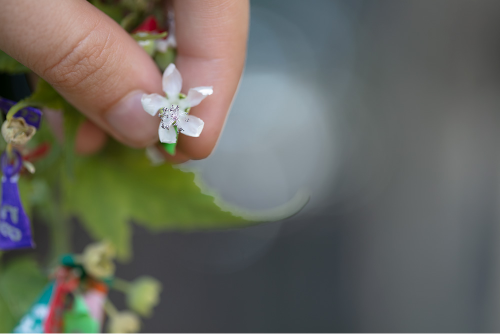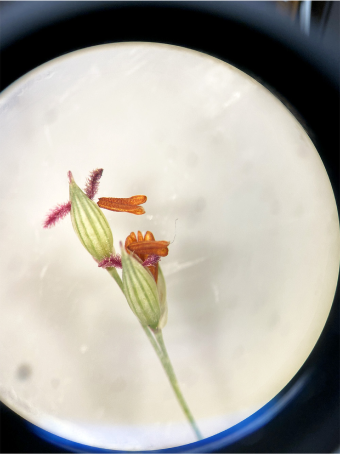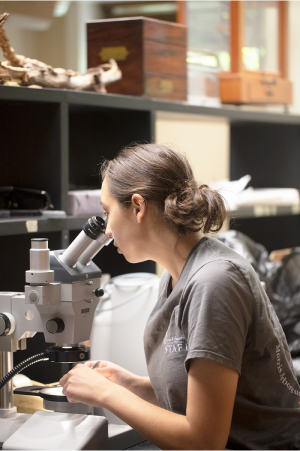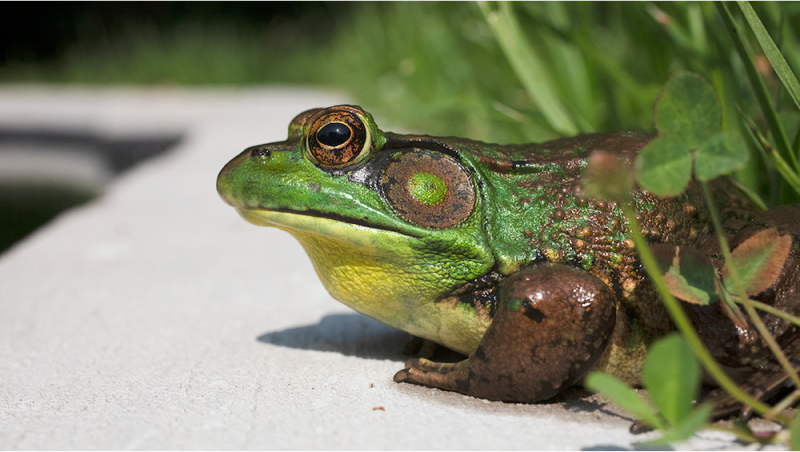Blog

A Day in the Life of a Plant Science Fellow
Emily Humphreys is the the Eli Kirk Price Plant Science Fellow
9:50 AM
My day started with an accidental decapitation. Blades whirred above me, and time seemed to slow. Thwack! Thwack! Thwack! The plant I was holding recoiled with each impact. A streak of light green fell to the floor.
In hindsight, I really should have seen it coming. The plant I am studying, Virginia Mallow (Ripariosida hermaphrodita) can grow up to sixteen feet tall in a single season. Combine this with a green house full of ceiling fans and you have a recipe for disaster.
I took a moment to collect myself, then inspected the damage. Half a leaf and a cluster of wilted flowers lay curled on the floor. I breathed a sigh of relief. Being so late in the season, the plant has only a handful of buds left to bloom. Those are what I am interested in. Wilted flowers we can stand to lose.
Tonight, I am going to bring the Virginia Mallow home and then, tomorrow, I will begin recording observations of the plant's floral development. Each day I will monitor things like whether the flower is releasing pollen and if the female reproductive organs are visible. Then, when I look across my notes from the month, I will have a good understanding of the timing of floral events in this particular plant.

10:05 AM
I just realized I never introduced myself. My name is Emily, and I am the 2022-2023 Eli Kirk Price Plant Science Fellow at the Morris Arboretum. This means I get to spend my days trying to answer fascinating questions about plants. Right now, I am investigating floral development, but past fellows have investigated everything from which environments certain plants prefer to bias in botanical collecting. Over the next few months, I will be writing a series of blog posts on different aspects of plant science at the Arboretum. I hope you will come along for the ride.
10:50 AM
I am back from an unexpected but delightful tangent in my day. As I was writing, two other members of the Plant Science department, Dr. Tim Block (Director of Plant Science) and Nora Wildberg (curatorial intern), walked in with armfuls of grasses—they had everything from stout green grasses, to sprawling purple grasses, to grasses with lemon yellow anthers that they had gathered from natural lands. Dr. Block, an expert on the flora of Pennsylvania, led Nora and I through the twisting branching series of diverging paths that is grass identification. Half an hour later, and after more than one wrong turn, we had identified purpletop, a beautiful native Pennsylvania grass with a voluminous tuft of eggplant purple inflorescences.

Credit: Emily Humphreys

Credit: Emily Humphreys
11:51 AM
The weather today is beautiful. It rained nonstop the last two days much to the delight of our horticulture staff. Today is sunny, but the rain has taken the edge off the summer heat.
I am sitting outside on a wall behind Gates Hall, the building where I work. I am certainly biased, but this is one of my favorite spots in the whole Arboretum. Two large dogwoods give shade and there is a little fountain here that is home to two bright green frogs. There used to be only one frog, but his diligent and dashing croaking won him a pair. Watching their love story has been one of the highlights of my summer.
I have spent the last hour working on a Virginia Mallow time lapse. I figured out how to create them yesterday after some online reading and a bit of trial and error. Now it is one of my favorite things to do. Time lapses are a fantastic way to visualize floral changes. I am hoping I can capture some of the phenomenon I observed during my research this summer.
Still, it turns out that making time lapses is not as engaging as you might think. Once you set up the camera, it does most of the work. Which leaves me sitting on this wall, enjoying the sunshine, and writing to you.

1:32 PM
It turns out the time lapse I created was out of focus. Not very out of focus, but when you are trying to look at individual grains of pollen, it does not take much to ruin the shot. The time lapse also had bursts of overexposure as the sun came out from behind clouds. Now, two hours older and wiser, I find myself back on the same wall while my camera takes shot after shot. Fingers crossed this one is a bit more usable.
2:50 PM
Success! The second time lapse was a major improvement. Next, I want to try taking a time lapse through a microscope, but that is a project for a different day.
I am planning to spend the rest of the afternoon on a handful of dull but important tasks; there is a series of instructional videos on how to avoid phishing scams sitting in my “to watch” folder. As such, I think I will wrap up my first post here.
------
Like most days at the Arboretum, today was filled with small pieces of big projects. Daily floral observations mean little on their own, but they create a picture over the course of months. Time lapses illustrate that picture, and opportunities for learning expand the scope of future possibilities. I have only been at the Morris Arboretum for a few months, but I am already beginning to see projects come together and maybe even the possibility to discover something new.